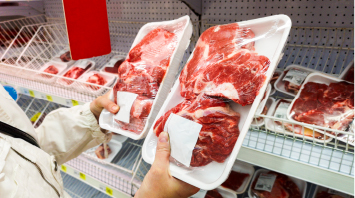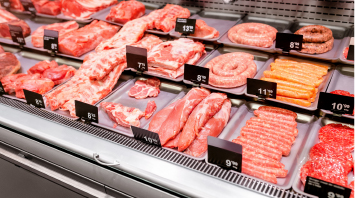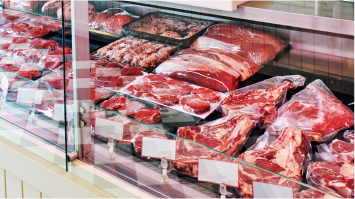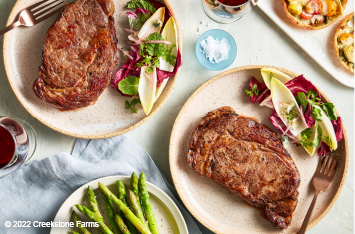By Michael Uetz, managing principal, Midan Marketing, strategic meat marketing, research and creative communications agency
Consumers today are incredibly aware of and concerned about inflation, and it’s impacting the way they shop for groceries, especially higher priced items like meat or beef. In June, shoppers were paying 8.2 percent more than last year, on average, at the meat case. This continues to add stress for consumers who were already purchasing less meat due to inflation. In a survey Midan Marketing conducted in March, 28 percent of meat consumers reported purchasing less meat over the past month, simply because the price was too high for their family.

In years past, when consumers were dealing with inflation or recession, they may have traded from whole muscle steaks to ground beef, or even from beef to pork or chicken. Today, consumers’ baseline has changed – they are regularly purchasing higher quality and more claims-based meats, so the adjustments they make to fit their budget also have to change.
This will likely include continuing to purchase claims-based and premium beef but saving it for special occasions rather than their everyday meals. Keeping consumers engaged at the meat case despite inflation means ensuring you’re still stocking the types of beef they are looking for.
Price
In April, Midan fielded a research study focused on beef to better understand what beef products consumers are seeking and which claims and attributes matter the most. Amid inflation at a 40-year high, we found that price, unsurprisingly, is the dominant factor when choosing between beef products.
Nearly two-thirds (64 percent) of beef consumers ranked price as the first or second most important influencing factor for their purchases. Even more Gen X shoppers are price conscious, with 71% of beef consumers ages 42-57 listing price as a top factor.
Additionally, Aging Traditionalists (meat consumers who aren’t interested in claims) and Convenience Chasers (shoppers looking to save both time and money) are statistically more likely to be concerned with price than other shoppers.
USDA grade
In the research study, one question asked consumers to set aside value and price and consider the importance of 28 other attributes they may be faced with when purchasing beef. They were shown four attributes at a time and asked to select the most and least important. This results in a ranking of each attribute against the other ones in the list.

The research found that once they set price aside, the most sought-out attribute for beef is a USDA Choice grade – across beef consumers, this is the strongest driver for choosing one package of beef over another, followed by USDA Prime. This doesn’t mean that consumers perceive USDA Choice to be higher quality than Prime, simply that it’s the claim they are looking for in the meat case.
Consumers likely look for a USDA Choice grade because they know it is a happy medium between what their taste buds desire and what their wallet can accommodate.
Tier one purchase drivers
The other top tier purchase drivers at the meat case are:

- raised with no added hormones or growth promotants (NAH);
- raised in the USA/product of the USA;
- all natural;
- minimally processed, no artificial ingredients; and
- raised with no antibiotics ever (NAE).
Through previous research Midan conducted with natural and organic meat purchasers, we know that (except for “raised in the USA/product of the USA”) these are claims that shoppers believe reflect whether the animal was raised humanely. Animal welfare is the single most important messaging pillar for the meat industry right now when trying to increase sales.
Tier two purchase drivers
A second tier of claims and attributes gives a much wider picture of the variety available at the meat case. These claims have above average importance with most consumers, but less than the tier one purchase drivers. These include claims like “high in protein” that competitors like plant-based meat alternatives do a much better job of touting than meat brands do. While this is a tier-two driver for the average consumer, there are a couple groups who see this as a tier one (very important) claim, like Gen Z shoppers and Protein Progressives.
Another claim in this category is Angus, the most sought after of all breed claims. While this is a tier two driver overall, it is more important for Aging Traditionalists and less important for Wellness Divas (the consumers most likely to eat poultry and seafood rather than beef and pork). It is unsurprising that Aging Traditionalists value the Angus claim highly as this segment skews older and may remember when Certified Angus Beef was introduced as a program to increase beef quality in the meat case.

This second tier of claims gets into the nitty gritty of crafting beef products that resonate with specific consumer groups:
- Humanely (ethically) raised – a tier one purchase driver for Gen Zs and Wellness Divas;
- Premium – a tier one purchase driver for Protein Progressives and Aging Traditionalists;
- High in protein – a tier one purchase driver for Gen Zs and Protein Progressives;
- Angus beef – a tier one purchase driver for Aging Traditionalists;
- Grass fed – a tier one purchase driver for Wellness Divas;
- Locally raised – a tier three purchase driver for Gen Zs and Protein Progressives;
- Pasture raised – a tier three purchase driver for Gen Zs, Protein Progressives and Convenience Chasers;
- Non-GMO/GMO-free – a tier three purchase driver for Aging Traditionalists and Convenience Chasers; and
- Sustainably raised – a tier one purchase driver for Wellness Divas.
Brands
While brands themselves are only a top purchase driver for about a quarter of beef consumers, branded beef programs do tend to lean heavier into the claims space to offer more differentiation. For example, Certified Piedmontese Beef doesn’t communicate a USDA grade designation but features many other tier one drivers as well as the tier two high protein claim, making it a great choice for Gen Z consumers and Protein Progressives, who prioritize both brands and protein content.

Another example of a brand leaning into the claims that resonate with younger consumers is Creekstone Farms. In addition to dedicated black Angus genetics, Creekstone Farms Natural Black Angus Beef, has NAE and NAH claims on their product, leading a different set of consumers to see the brand as high quality and a product they are excited to feed their families, explained Dan Stewart, director of marketing for Creekstone Farms.
Having both a natural claim and an Angus claim means natural beef from Creekstone Farms checks the boxes of the most sought-after attributes for all meat consumer segments, not just the ones who seek out Angus quality.
Most (72 percent) beef consumers agree that they cannot imagine giving up the taste of beef. So, our opportunity is to make sure they don’t have to. Offering beef (both whole muscle and grinds) with the claims and attributes your consumers are seeking, as well as demonstrating how these claims increase the value for beef products will make it easier, and feel more justified, for consumers to still choose beef as their protein of choice even with high prices.
For more information, visit midanmarketing.com.
For more meat/seafood/poultry news from The Shelby Report, click here.

